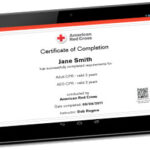Getting your tax refund can be an eagerly awaited event. If you’ve paid more tax throughout the year than you owe, the good news is you’re likely due some money back from the government. Even if you didn’t pay taxes, you might still be eligible for a refund if you qualify for refundable tax credits. To get your refund processed, it’s essential to file your tax return. Remember, you generally have a window of 3 years to claim any tax refund.
How to Check the Status of Your Tax Refund
Wondering “where’s my taxes?” if you’re expecting a refund? The IRS provides a handy online tool called “Where’s My Refund?” which allows you to track your refund status. If you filed your tax return electronically, you can typically start checking your refund status within 48 hours. For returns filed in previous years, specifically the last 2 years, you can also retrieve refund information using this tool.
Check Your Refund Status Now
Tracking Your Amended Return
If you’ve filed an amended tax return, the tracking process is slightly different and generally takes a bit longer. It can take up to 3 weeks for amended returns to appear in the IRS system and the complete processing time can be up to 16 weeks. To check the status of your amended return, you should use the “Where’s My Amended Return?” tool, which is specifically designed for tracking these types of returns.
Track Your Amended Return Here
Understanding the Tax Refund Timeline
Knowing when to expect your tax refund can help with financial planning. Generally, the IRS aims to process refunds within these timeframes:
- E-filed returns: Typically within 21 days.
- Amended and mailed returns: Around 4 weeks or potentially longer.
- Returns needing review: Processing may take longer if your return requires corrections or further review by the IRS.
Keep in mind that these are typical timelines and the exact timing can vary based on individual circumstances and the complexity of your tax return.
Choosing How to Receive Your Tax Refund
The IRS offers several options for receiving your tax refund, giving you flexibility and control:
Direct Deposit: This is widely recognized as the fastest and most secure method to get your refund. You can have your refund directly deposited into your checking account, savings account, or even a retirement account. For added convenience, you can even split your refund into up to three different accounts.
Paper Check: If you prefer a traditional approach, the IRS can mail a paper check to the address listed on your tax return. It’s important to ensure your address is current to avoid any delays or misdelivery. If you’ve moved, remember to notify the IRS of your address change.
Prepaid Debit Card: Some banks and card providers allow tax refunds to be deposited onto prepaid debit cards. Check with your card provider to confirm compatibility and obtain the correct account details for direct deposit.
Mobile Payment Apps: Certain mobile payment apps are now equipped to accept direct deposits, providing another digital option for receiving your refund.
Traditional, Roth or SEP-IRA: You have the option to directly deposit your refund into an existing IRA account, contributing to your retirement savings.
Planning for Your Next Tax Refund
Want to adjust the size of your tax refund next year? You can use the IRS’s Tax Withholding Estimator to help you adjust your tax withholding throughout the year. This allows you to fine-tune your tax payments to better match your actual tax liability, potentially leading to a smaller or larger refund in the following tax season, depending on your preference.
Use the Tax Withholding Estimator
Addressing Issues with Your Tax Refund
Sometimes, things don’t go as planned, and you might encounter issues with your tax refund. Here are some common problems and how to address them:
Unexpected Refund Amount: If your refund is different from what you expected, it could be due to adjustments made by the IRS, such as for outstanding debts or corrections to your tax return.
Missing or Destroyed Refund Check: If your paper check is lost, stolen, or destroyed, you can request a replacement check from the IRS.
Incorrect Account Information: If you entered the wrong account or routing number for direct deposit, immediately call the IRS at 800-829-1040 to try and stop the deposit. If the deposit has already been made to the wrong account, you’ll need to contact your bank to attempt to recover the funds.
Paper Check Instead of Direct Deposit: Receiving a paper check when you expected direct deposit can occur for several reasons: the account isn’t in your name, your spouse’s name, or a joint account; your bank rejected the direct deposit; or you’ve exceeded the limit of 3 electronic refunds into a single account.
Refund You Weren’t Entitled To: If you receive a tax refund that you realize you were not entitled to, it’s important to promptly return it to the IRS to avoid potential issues.
Getting Phone Assistance
For the most up-to-date information on your refund status, the “Where’s My Refund?” tool is your best resource. If you lack internet access, you can use the IRS’s automated refund hotline. For current-year refunds, call 800-829-1954. For amended returns, the number is 866-464-2050.
If you believe there has been an error with your refund calculation, you can review your refund details online using “Where’s My Refund?” or through your IRS online account for individuals.
File Your Tax Return Pay Taxes On Time


